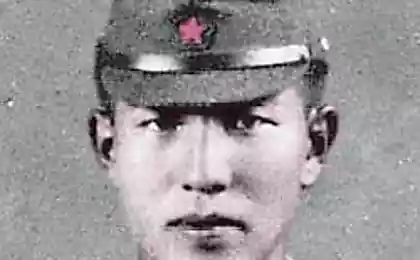1100
Caucasian war
May 21, 1864 ended the longest war of the XIX century Russia, which has become part of a complex struggle for possession of the Caucasus. It faced the national mentality and geopolitical interests. "Caucasian Card" was played hard.
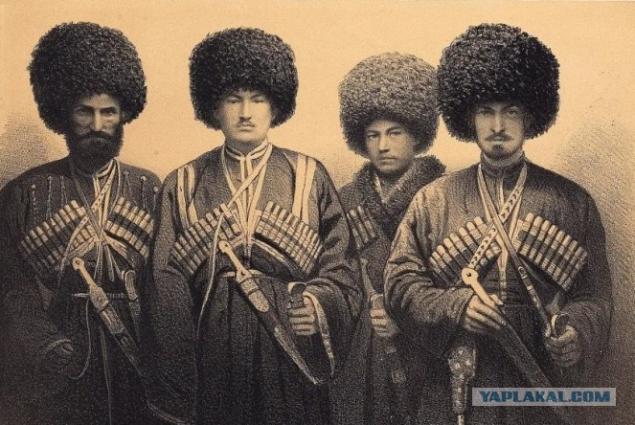
East war and strategy Yermolov
The initial period of the Caucasian war is inextricably linked with the activities of Alexei Petrovich Yermolov, concentrated in his hands all power in the volatile Caucasus.
For the first time Russian troops in the Caucasus, had to deal with this new phenomenon as East war - a war where victory is achieved not only on the battlefield, and not always related to the number of defeated enemies. Inevitable part of such a war becomes humiliation of the vanquished enemy, without which victory could not be achieved in the full sense of it. Hence the extreme actions and cruelty on both sides, which sometimes incomprehensible contemporaries.
However, a strict policy, Yermolov paid great attention to the construction of fortifications, roads, glades and trade. From the beginning to bet on the gradual development of new territories where military campaigns alone could not give a complete success.
Suffice it to say that from disease and desertion forces have lost at least 10 times more soldiers than from direct confrontations. Hard, but consistent line Yermolov was not continued by his successors in the 30th - the beginning of 40 years of the XIX century. Such a temporary waiver of the strategy Yermolov tightened war for several long decades.

Forever in the ranks
After joining in 1829, the Black Sea coast, begins the construction of fortifications to suppress the slave trade and smuggling of weapons of mountaineers from Turkey. For 9 years, over 500 km from Anapa to Poti was built fortifications 17.
Service in the fortifications of the Black Sea Line, which carries out the communication between the two times a year and only by sea, was extremely heavy and physically and morally.
In 1840, the Highlanders stormed Velyaminovskaya, Mikhailovskoye, Nikolaev strengthening and Fort Lazarev, but were defeated at the walls and Abinsky Navaginskaya fortifications. In the history of the most memorable feat was Michael's defenders to strengthen. It was built at the mouth of the river Vulan.
In the spring of 1840 the garrison consisted of 480 people (at 1500 necessary for the defense) are up to a third of patients. 22th March 1840 Mikhailovsky was taken by storm mountaineers. Most advocates strengthening died in combat, several people were captured. When the position of the garrison was hopeless, the lower the rank of the 77th Infantry Regiment Tenghinka Arkhip Osipov blew up their lives to the powder magazine, destroying hundreds of opponents.
Later on this place was built the village, named after the hero - Arkhipo-Osipovka. According to the order number 79 on November 8, 1840 the Minister of War AI Chernyshev: "To perpetuate the memory of the praiseworthy feat of ordinary Arkhip Osipov, who had no family, His Imperial Majesty to command His Majesty deigned to keep forever his name in the lists of the 1st Grenadier Company Tenghinka Infantry Regiment, considering it the first rows, and at all roll calls when asked the name of the first ordinary answer him: "He died for the glory of Russian arms in the Mikhailovsky strengthening» ».
During World War II many of the glorious traditions of the old army were recovered. September 8, 1943 order was issued the first ever enrollment in the lists of the Red Army regiment. The first hero was elected soldier Alexander Matrosov.

Ahulgo
In 30-40 years of XIX century Russian commanders have repeatedly tried to quickly end the war in one fell swoop - occupation or destruction of the largest and most fortified villages on the territory controlled by Shamil.
Ahulgo (residence of Shamil) was situated on the cliffs and surrounded on three sides by the river. June 12, 1839 village was besieged 13,000th Russian detachment under the command of Lieutenant-General Grabbe. Defended Ahulgo about 2 thousand Highlanders. After the failure of a frontal attack, Russian troops crossed the serial capture fortifications actively using artillery.
22th August 1839 Ahulgo was stormed after a 70-day siege. Russian troops lost 500 killed and 2,500 wounded; Highlanders about 2 thousand killed and captured. Injured with multiple murids Shamil managed to escape and hide in the mountains.
Taking Ahulgo was a significant, but temporary success of the Russian troops in the Caucasus, since the capture of individual villages and even the powerful, without attachment to the occupied territories did not give anything. Participants taking were awarded a silver medal "For the capture of the village Ahulgo." Taken considered impregnable village was dedicated to the first and, unfortunately, not preserved Panorama Franz Roubaud "Storm Aula Ahulgo."
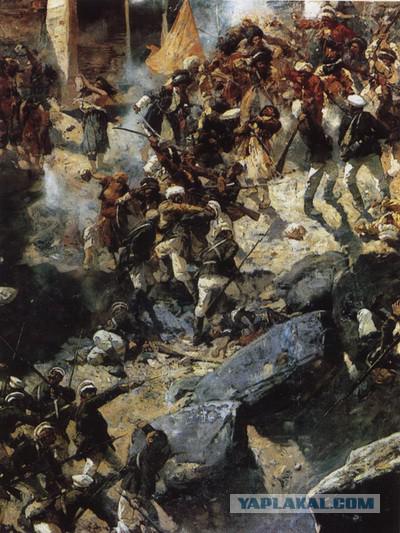
Dargin expedition
In 1845, appointed to the post of governor of the Caucasus war hero in 1812, Mikhail S. Vorontsov made another major attempt to end the power of a single decisive blow Shamil - aul Dargo taking. Overcoming resistance to debris and mountaineers, Russian troops managed to take Dargo, near which they were surrounded and forced the Highlanders to break back with huge losses.
Since 1845, after a failed Dargin expedition, Vorontsov returned to Yermolov's policies: the construction of fortresses, the construction of communications, trade and the gradual narrowing of the territory of the Imamate of Shamil.
And then began a war of nerves, when Shamil repeated raiding operations trying to provoke the Russian command to the new big campaign. Russian commanders, in turn, a reflection of limited raids, continued to hold its line. Since then, the fall of the Imamate was a matter of time. Although for several years the final conquest of Chechnya and Dagestan detained for heavy Russian Crimean War.

Landing at Cape Adler
During the period of the Caucasian war continued to improve tactics landings. As a rule, in conjunction with ground forces, the sailors were in the first echelon. As we approach the shore, they carried out shelling out boat falcon, and then, depending on the situation, provided the main landing force landing.
In the event of a massive attack, mountaineers reflect bayonets in close order, where terrible melee swords and daggers were massive ineffective. In addition, the Highlanders was common superstition that a warrior, bayoneted, is likened to a pig and it was considered shameful death.
However, in 1837, during a landing at Cape Adler, everything turned out differently. Instead of directly attacking the rubble, paratroopers sent into the woods, assuming divert mountaineers from the present place of disembarkation, or force divided forces.
But everything turned out the opposite. Highlanders from the naval artillery fire hid in the woods, and directed to the Russian troops faced a numerically superior enemy. In the dense forest there were some heated battles that cost considerable losses.
Among those killed in the battle, and was well-known writer-Decembrist Ensign Alexander Bestuzhev-Marly. Wounded several bullets, he shall be cut passed over the crowd of mountaineers. A few days later he was killed Mullah Ubykh, who had discovered the ring and gun previously owned Bestuzhev.
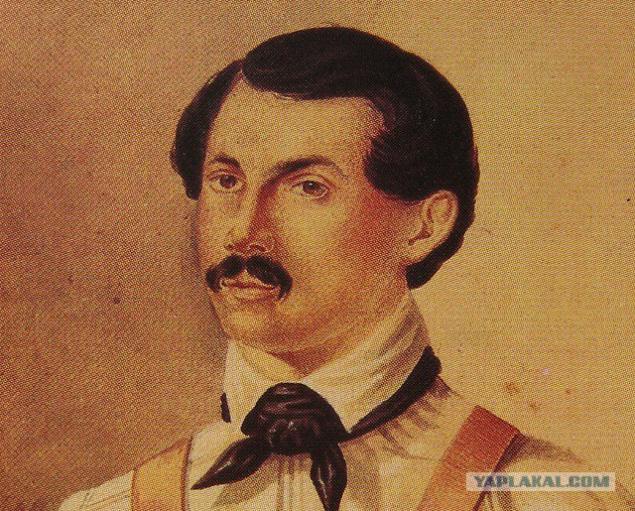
Victory or money
The final stage of the Caucasian war in Chechnya and Dagestan, West has been associated with the activities of Prince Baryatinsky, which largely continued the line Yermolov and Vorontsov.
After an unsuccessful Crimean War in Russian summit voices that need to conclude a lasting peace with Shamil, marking the boundaries of the Imamate. In particular, this position is held by the Finance Ministry, pointing to a huge and economically unjustified costs on the conduct of hostilities.
However Baryatinsky through his personal influence on the king, he is not easily achieved in the Caucasus huge concentration of forces and means that neither Yermolov or Vorontsov could not even dream of. The number of troops was reduced to 200 thousand. Man who received the latest weapons at the time.
Avoiding large risky operations, Baryatinsky slowly but methodically squeezed ring around Shamil remain under the control villages, occupies one stronghold after another. Shamil was the last stronghold of alpine village Gunib, taken August 25, 1859.
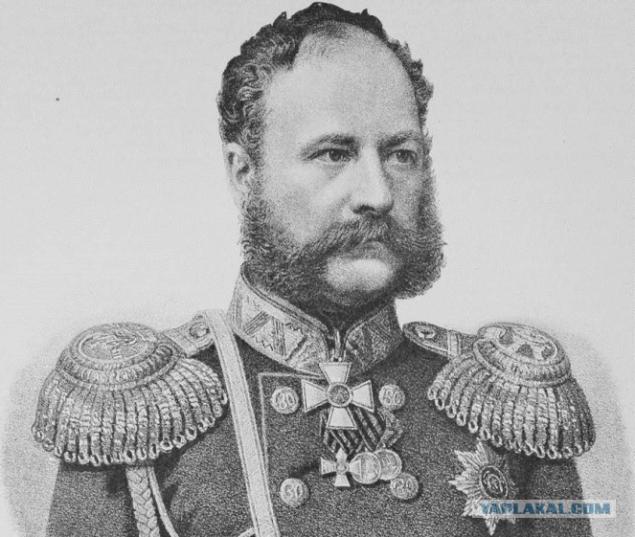
The feat of St. George's post in the Limes
After the conquest of Chechnya and Dagestan, the main events took place in the Western Caucasus - for the Kuban and the Black Sea coast. Constructed office and the village often became the object of attack. Since September 3rd, 1862 mountaineers attacked St. George Post Adagumskoy line where there is: a Cossack lieutenant, sergeant, a gunner and a Cossack 32.
Highlanders initially anticipated conduct a raid on the village Upper Bakansky attack and post them gave very little in terms of production. However, based on surprise, the post was attacked. The first two attacks were repulsed by rifle fire, but during the third attack Highlanders stormed into the fortification. 18 remaining at this point the defenders took refuge in the huts and killed in a fire, shooting through. But the surprise attack was lost mountaineers, great loss, and they were forced to abandon the original purpose of the raid and retreat, taking with them an estimated spies, about 200 killed.
Everything. I finished.
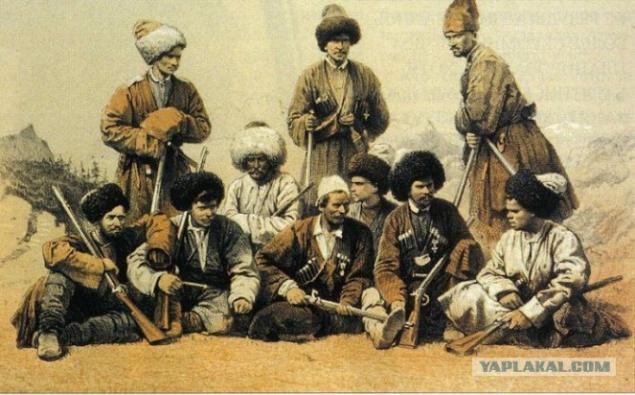

East war and strategy Yermolov
The initial period of the Caucasian war is inextricably linked with the activities of Alexei Petrovich Yermolov, concentrated in his hands all power in the volatile Caucasus.
For the first time Russian troops in the Caucasus, had to deal with this new phenomenon as East war - a war where victory is achieved not only on the battlefield, and not always related to the number of defeated enemies. Inevitable part of such a war becomes humiliation of the vanquished enemy, without which victory could not be achieved in the full sense of it. Hence the extreme actions and cruelty on both sides, which sometimes incomprehensible contemporaries.
However, a strict policy, Yermolov paid great attention to the construction of fortifications, roads, glades and trade. From the beginning to bet on the gradual development of new territories where military campaigns alone could not give a complete success.
Suffice it to say that from disease and desertion forces have lost at least 10 times more soldiers than from direct confrontations. Hard, but consistent line Yermolov was not continued by his successors in the 30th - the beginning of 40 years of the XIX century. Such a temporary waiver of the strategy Yermolov tightened war for several long decades.

Forever in the ranks
After joining in 1829, the Black Sea coast, begins the construction of fortifications to suppress the slave trade and smuggling of weapons of mountaineers from Turkey. For 9 years, over 500 km from Anapa to Poti was built fortifications 17.
Service in the fortifications of the Black Sea Line, which carries out the communication between the two times a year and only by sea, was extremely heavy and physically and morally.
In 1840, the Highlanders stormed Velyaminovskaya, Mikhailovskoye, Nikolaev strengthening and Fort Lazarev, but were defeated at the walls and Abinsky Navaginskaya fortifications. In the history of the most memorable feat was Michael's defenders to strengthen. It was built at the mouth of the river Vulan.
In the spring of 1840 the garrison consisted of 480 people (at 1500 necessary for the defense) are up to a third of patients. 22th March 1840 Mikhailovsky was taken by storm mountaineers. Most advocates strengthening died in combat, several people were captured. When the position of the garrison was hopeless, the lower the rank of the 77th Infantry Regiment Tenghinka Arkhip Osipov blew up their lives to the powder magazine, destroying hundreds of opponents.
Later on this place was built the village, named after the hero - Arkhipo-Osipovka. According to the order number 79 on November 8, 1840 the Minister of War AI Chernyshev: "To perpetuate the memory of the praiseworthy feat of ordinary Arkhip Osipov, who had no family, His Imperial Majesty to command His Majesty deigned to keep forever his name in the lists of the 1st Grenadier Company Tenghinka Infantry Regiment, considering it the first rows, and at all roll calls when asked the name of the first ordinary answer him: "He died for the glory of Russian arms in the Mikhailovsky strengthening» ».
During World War II many of the glorious traditions of the old army were recovered. September 8, 1943 order was issued the first ever enrollment in the lists of the Red Army regiment. The first hero was elected soldier Alexander Matrosov.

Ahulgo
In 30-40 years of XIX century Russian commanders have repeatedly tried to quickly end the war in one fell swoop - occupation or destruction of the largest and most fortified villages on the territory controlled by Shamil.
Ahulgo (residence of Shamil) was situated on the cliffs and surrounded on three sides by the river. June 12, 1839 village was besieged 13,000th Russian detachment under the command of Lieutenant-General Grabbe. Defended Ahulgo about 2 thousand Highlanders. After the failure of a frontal attack, Russian troops crossed the serial capture fortifications actively using artillery.
22th August 1839 Ahulgo was stormed after a 70-day siege. Russian troops lost 500 killed and 2,500 wounded; Highlanders about 2 thousand killed and captured. Injured with multiple murids Shamil managed to escape and hide in the mountains.
Taking Ahulgo was a significant, but temporary success of the Russian troops in the Caucasus, since the capture of individual villages and even the powerful, without attachment to the occupied territories did not give anything. Participants taking were awarded a silver medal "For the capture of the village Ahulgo." Taken considered impregnable village was dedicated to the first and, unfortunately, not preserved Panorama Franz Roubaud "Storm Aula Ahulgo."

Dargin expedition
In 1845, appointed to the post of governor of the Caucasus war hero in 1812, Mikhail S. Vorontsov made another major attempt to end the power of a single decisive blow Shamil - aul Dargo taking. Overcoming resistance to debris and mountaineers, Russian troops managed to take Dargo, near which they were surrounded and forced the Highlanders to break back with huge losses.
Since 1845, after a failed Dargin expedition, Vorontsov returned to Yermolov's policies: the construction of fortresses, the construction of communications, trade and the gradual narrowing of the territory of the Imamate of Shamil.
And then began a war of nerves, when Shamil repeated raiding operations trying to provoke the Russian command to the new big campaign. Russian commanders, in turn, a reflection of limited raids, continued to hold its line. Since then, the fall of the Imamate was a matter of time. Although for several years the final conquest of Chechnya and Dagestan detained for heavy Russian Crimean War.

Landing at Cape Adler
During the period of the Caucasian war continued to improve tactics landings. As a rule, in conjunction with ground forces, the sailors were in the first echelon. As we approach the shore, they carried out shelling out boat falcon, and then, depending on the situation, provided the main landing force landing.
In the event of a massive attack, mountaineers reflect bayonets in close order, where terrible melee swords and daggers were massive ineffective. In addition, the Highlanders was common superstition that a warrior, bayoneted, is likened to a pig and it was considered shameful death.
However, in 1837, during a landing at Cape Adler, everything turned out differently. Instead of directly attacking the rubble, paratroopers sent into the woods, assuming divert mountaineers from the present place of disembarkation, or force divided forces.
But everything turned out the opposite. Highlanders from the naval artillery fire hid in the woods, and directed to the Russian troops faced a numerically superior enemy. In the dense forest there were some heated battles that cost considerable losses.
Among those killed in the battle, and was well-known writer-Decembrist Ensign Alexander Bestuzhev-Marly. Wounded several bullets, he shall be cut passed over the crowd of mountaineers. A few days later he was killed Mullah Ubykh, who had discovered the ring and gun previously owned Bestuzhev.

Victory or money
The final stage of the Caucasian war in Chechnya and Dagestan, West has been associated with the activities of Prince Baryatinsky, which largely continued the line Yermolov and Vorontsov.
After an unsuccessful Crimean War in Russian summit voices that need to conclude a lasting peace with Shamil, marking the boundaries of the Imamate. In particular, this position is held by the Finance Ministry, pointing to a huge and economically unjustified costs on the conduct of hostilities.
However Baryatinsky through his personal influence on the king, he is not easily achieved in the Caucasus huge concentration of forces and means that neither Yermolov or Vorontsov could not even dream of. The number of troops was reduced to 200 thousand. Man who received the latest weapons at the time.
Avoiding large risky operations, Baryatinsky slowly but methodically squeezed ring around Shamil remain under the control villages, occupies one stronghold after another. Shamil was the last stronghold of alpine village Gunib, taken August 25, 1859.

The feat of St. George's post in the Limes
After the conquest of Chechnya and Dagestan, the main events took place in the Western Caucasus - for the Kuban and the Black Sea coast. Constructed office and the village often became the object of attack. Since September 3rd, 1862 mountaineers attacked St. George Post Adagumskoy line where there is: a Cossack lieutenant, sergeant, a gunner and a Cossack 32.
Highlanders initially anticipated conduct a raid on the village Upper Bakansky attack and post them gave very little in terms of production. However, based on surprise, the post was attacked. The first two attacks were repulsed by rifle fire, but during the third attack Highlanders stormed into the fortification. 18 remaining at this point the defenders took refuge in the huts and killed in a fire, shooting through. But the surprise attack was lost mountaineers, great loss, and they were forced to abandon the original purpose of the raid and retreat, taking with them an estimated spies, about 200 killed.
Everything. I finished.









